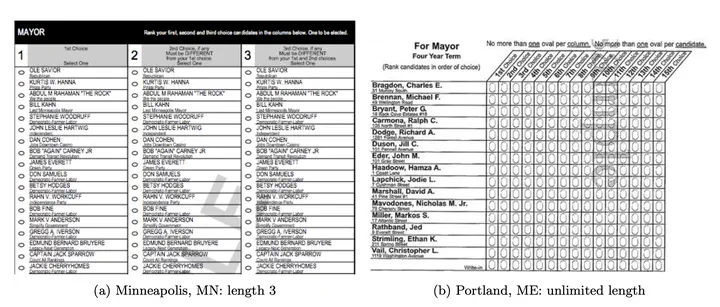
Abstract
Instant runoff voting (IRV) is an increasingly-popular alternative to traditional plurality voting in which voters submit rankings over the candidates rather than individual votes. In practice, municipalities often restrict the ballot length, the number of candidates a voter is allowed to rank on their ballot. We theoretically and empirically analyze how ballot length can influence the outcome of an election, given fixed voter preferences. We show that there exist preference profiles over k candidates such that up to k−1 different candidates win at different ballot lengths. We derive exact lower bounds on the number of voters required for such profiles and provide constructions matching these bounds. Additionally, we fully characterize which sequences of winners are possible over ballot lengths and provide explicit profile constructions achieving any feasible winner sequence. Finally, we analyze a collection of 168 real-world elections, where we truncate rankings to simulate shorter ballots. We find that shorter ballots could have changed the outcome in one quarter of these elections and that longer ballots can favor particular candidates. Our results highlight ballot length as a consequential degree of freedom in the design of IRV elections.